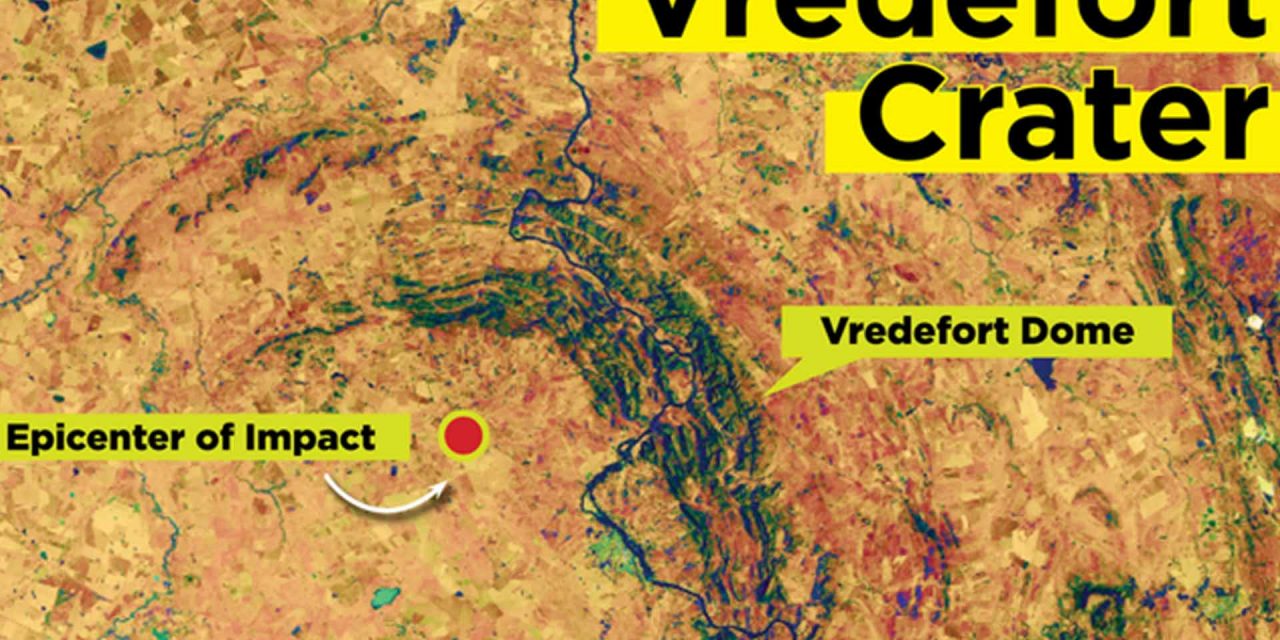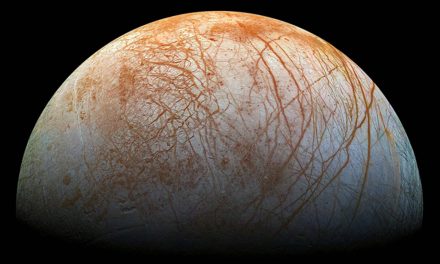An asteroid that impacted Earth creating the largest crater on the planet, is believed to be larger than previously thought
About two billion years ago, an impactor hurtled toward Earth, crashing into the planet in an area near present-day Johannesburg, South Africa.
The impactor – most likely an asteroid – formed what is today the biggest crater on our planet.
Scientists have widely accepted, based on previous research, that the impact structure, known as the Vredefort crater, was formed by an object about 15km in diameter that was travelling at a velocity of 15 kilometres per second.
But according to new research from the University of Rochester, the impactor may have been much bigger – and would have had devastating consequences across the planet. This research provides a more accurate understanding of the large impact and will allow researchers to better simulate impact events on Earth and other planets, both in the past and the future.
Natalie Allen, then of the University of Rochester, but now at John Hopkins University, conducted the research with Miki Nakajima, an assistant professor of Earth and environmental sciences. She said: “Understanding the largest impact structure that we have on Earth is critical.
“Having access to the information provided by a structure like the Vredefort crater is a great opportunity to test our model and our understanding of the geologic evidence so we can better understand impacts on Earth and beyond.”
See also: Earth-asteroid crater research aims to limit impact of future events
A bigger asteroid
Over the course of two billion years, the Vredefort crater has eroded. This makes it difficult for scientists to directly estimate the size of the crater at the time of the original impact, and therefore the size and velocity of the impactor that formed the crater.
An object that is 15km in size and travelling at a velocity of 15 kilometres per second would produce a crater about 172km in diameter. However, this is much smaller than current estimates for the Vredefort crater. These current estimates are based on new geological evidence and measurements estimating that the structure’s original diameter would have been between 250 and 280km during the time of the impact.
Allen, Nakajima, and their colleagues conducted simulations to match the updated size of the crater. Their results showed that an impactor would have to be much larger – about 20 to 25km – and travelling at a velocity of 15 to 20km per second to explain a crater 250km in size.
This means the impactor that formed the Vredefort crater would have been larger than the asteroid that killed off the dinosaurs 66 million years ago, forming the Chicxulub crater.
That impact had damaging effects globally, including greenhouse heating, widespread forest fires, acid rain, and destruction of the ozone layer, in addition to causing the Cretaceous-Paleogene extinction event that killed the dinosaurs.
Catastrophic consequences
If the Vredefort crater was even larger and the impact more energetic than that which formed the Chicxulub crater, the Vredefort impact may have caused even more catastrophic global consequences.
Nakajima said: “Unlike the Chicxulub impact, the Vredefort impact did not leave a record of mass extinction or forest fires given that there were only single-cell lifeforms and no trees existed two billion years ago.
“However, the impact would have affected the global climate potentially more extensively than the Chicxulub impact did.”
Dust and aerosols from the Vredefort impact would have spread across the planet and blocked sunlight, cooling the Earth’s surface. Nakajima added: “This could have had a devastating effect on photosynthetic organisms.
“After the dust and aerosols settled – which could have taken anywhere from hours to a decade – greenhouse gases such as carbon dioxide that were emitted from the impact would have raised the global temperature potentially by several degrees for a long period of time.”
The research is published in the Journal of Geophysical Research.
Image: An impactor – most likely an asteroid – hurtled toward Earth about two billion years ago, crashing into the planet near present-day Johannesburg, South Africa. The impactor formed Vredefort crater, what is today the biggest crater on our planet. Using updated simulation data, University of Rochester researchers discovered the impactor that formed Vredefort crater was much larger than previously believed.
Credit: NASA Earth Observatory image by Lauren Dauphin/ University of Rochester illustration by Julia Joshpe.














